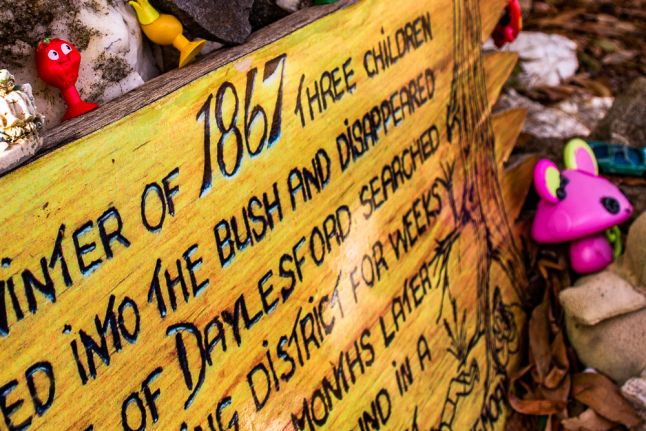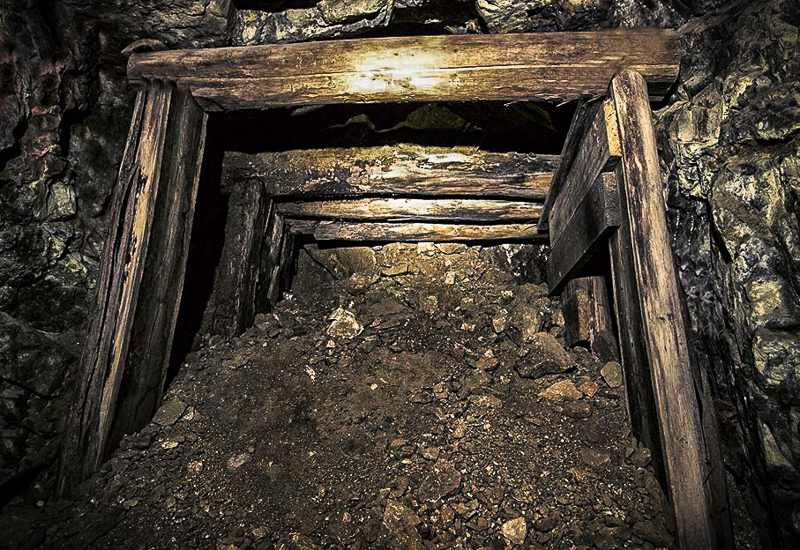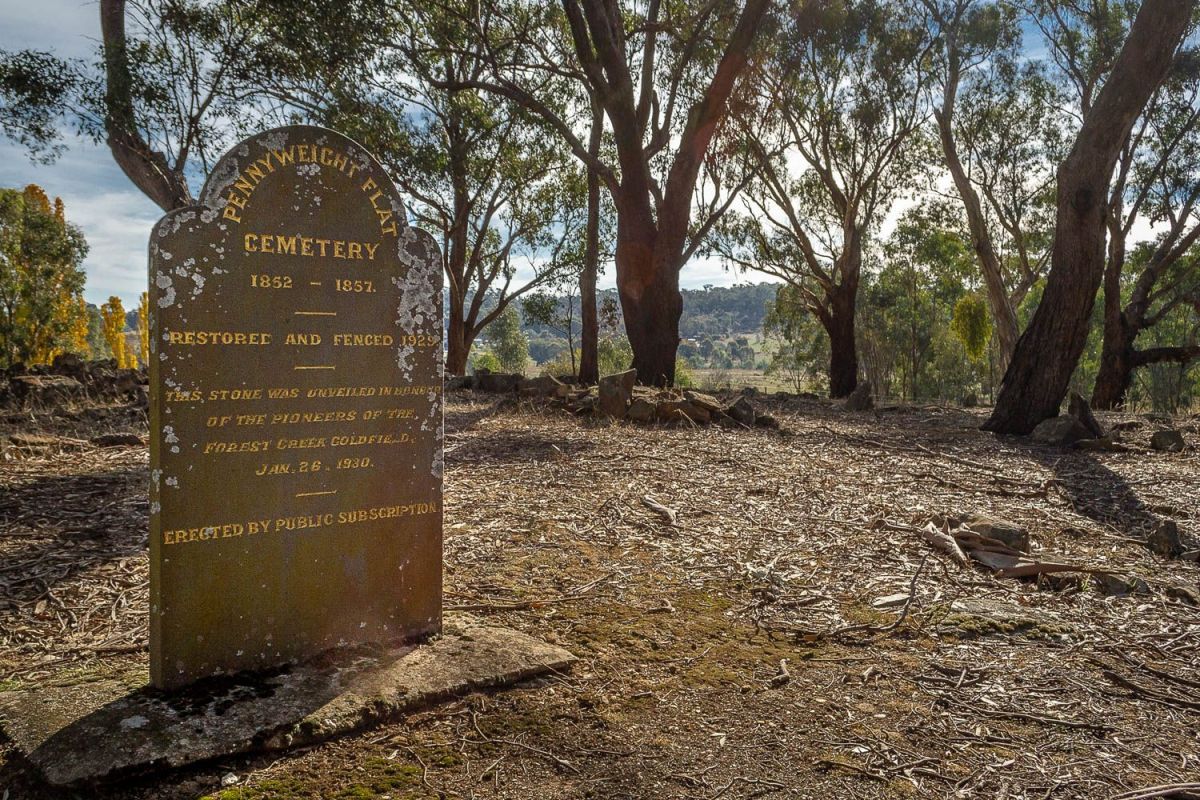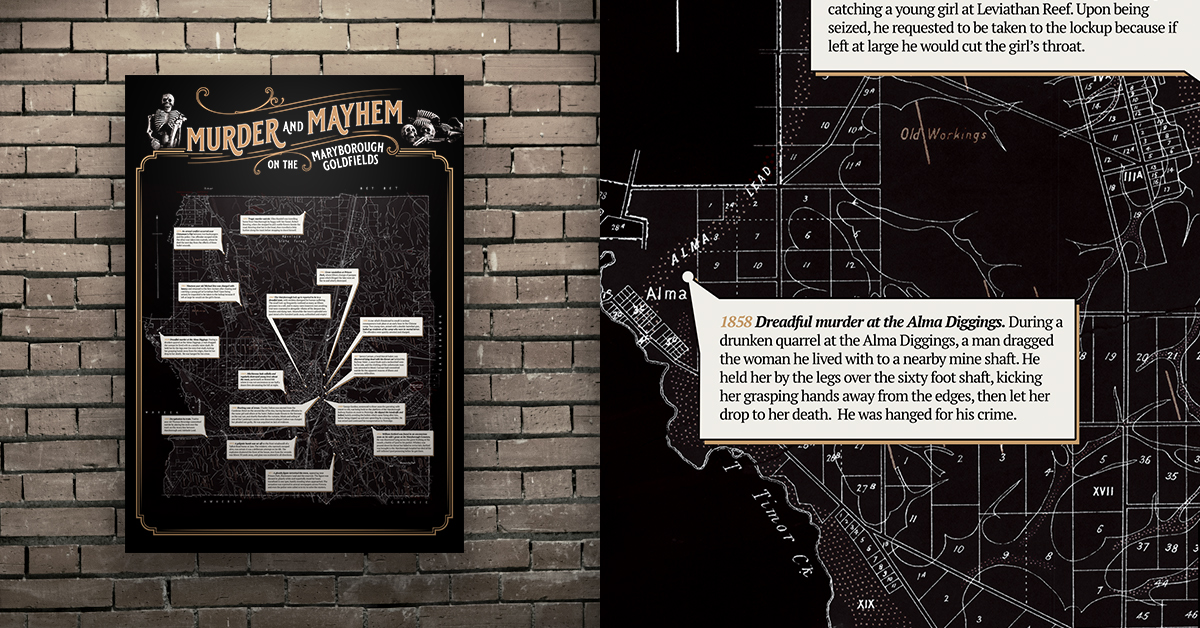There are many locations throughout the Victorian Goldfields which commemorate events of the past, but unfortunately not all of them were as rejoiced as the 1869 discovery of the Welcome Stranger gold nugget. The region also harbours a grim history, rife with tragedy. This list compiles some of the most tragic events throughout the Victorian Goldfields. If you're interested in more dark history, you'll also want to check out our page on the dark side of the Goldfields.








Missing Childrens Memorial, Musk VIC

One of the saddest stories in Victoria's history is that of the three young boys who wandered off into the bush in the winter of 1867, never to be seen alive again. Locals came together and searched for weeks to no avail. The bodies of these unfortunate children, aged just four, five and seven, were discovered in a hollow tree almost three months later. Their names were William Graham, Thomas Graham and Alfred Herbert Burman, lost but not forgotten. This beautiful roadside memorial shares their heartbreaking story. The memorial features a cairn adorned with children's toys, a decorative seat, and various informative signs. Read more...
Buried Alive!

The following collection of incidents were printed in newspapers across Australia during the 1850s, and tell of tragic accidents where miners were literally buried alive. Some miraculously escaped with their lives, others were killed on the spot, and some clung to life for hours before succumbing to their injuries. In some cases trapped miners were alive when rescue efforts commenced but tragically perished before rescuers could reach them. A riveting first-hand recollection of a Ballaarat (now Ballarat) miner describes many local mining accidents - including several miraculous escapes. We will begin with a few stories of survival against the odds before turning to tragic deaths, an apparent attempt to cover up a murder using the all-too-common mining accident as a ruse, and finally the fascinating recollections of the Ballaarat miner. Read more...
Hustlers Reef Gold Mining Reserve, Bendigo VIC

Take a short stroll through the Hustlers Reef Gold Mining Reserve and learn about the history of one of Bendigo's richest underground mines - and the site of the town's worst mining accident. Detailed information signs along the walking track present the operations and successes of the The Great Extended Hustlers Mine, along with the 1914 disaster which saw seven miners killed in an explosion 321 metres below the surface. Read more...
Pennyweight Flat Childrens Cemetery, Moonlight Flat VIC

The Pennyweight Flat Children's Cemetery in Moonlight Flat is a heartbreaking result of the awful living conditions in the diggings during the gold rush of the 1850s. Around 200 shallow graves, most marked only by small stone rings and piles, are scattered amongst the trees. A lack of clean drinking water along with accidents and diseases were the main causes of death for children living on the goldfields. The first recorded deaths on the Mount Alexander Diggings were of two small children, who perished of dysentery in November 1851. Read more...
Miner's Grave, Lillicur VIC

This lonely grave sits quietly within the Talbot Nature Conservation Reserve in Lillicur, marked only by stones and a simple cross. The grave belongs to a man named Baldock, who tragically lost his life in a nearby mining accident. Read more...
New Australasian No. 2 Gold Mine, Creswick VIC

The New Australasian No. 2 Deep Lead Gold Mine in Creswick is the scene of one of Australia's worst underground mining disasters.
On the 11th of December 1882 forty one men entered the New Australasian No 2 mine to work a seemingly ordinary Monday night shift. In the early hours of Tuesday morning, 12th of December 1882, water flooded the mine from the old workings of Australasian No. 1 trapping twenty seven of the men underground. Rescue efforts commenced immediately but by the time the miners were reached three days later only five had survived. The body of one man was still warm when it was recovered.
Many firsthand accounts of the disaster were published in the newspapers, describing the unimaginable and horrific experiences of those trapped underground as well as those endeavoring to reach them. Read more...
Clunes Cemetery, Clunes VIC

All cemeteries are macabre by nature, but this striking cemetery on the outskirts of Clunes has a particularly gruesome history. The Clunes Cemetery is the site of a 1920's suicide of an almost theatrical nature. Matthew Birch, sexton at the Clunes Cemetery, was found dead in the yard of the cemetery lodge by his wife early one morning, his head completely blown off. Cause of death was determined to be a deliberate, self inflicted explosion of dynamite. Birch had wrapped a coat around his head before causing the explosion. Pieces of the head and brains were reportedly spattered about the trees and on a fence. Read more...
1895 Murder/Suicide, Timor VIC

A small information sign stands alongside the M63 Track in the bush outside Timor indicating the site of the 1895 murder of Ellen Randell, tragic victim of a murder/suicide committed by her fiance, Robert Bowring. A pile of stones was placed over the pool of blood where Ellen Randell had died, forming a grim cairn which remarkably still remains over a century later. Ellen Randell was travelling home from Maryborough by buggy with her fiance, Robert Bowring, when she stopped to pick wattle flowers beside the road. Bowring shot her in the head, then traveled a little further along the track before stopping to shoot himself. Read more...
SEE ALSO
Murder and Mayhem on the Maryborough Goldfields! Shop high quality A1 print.



